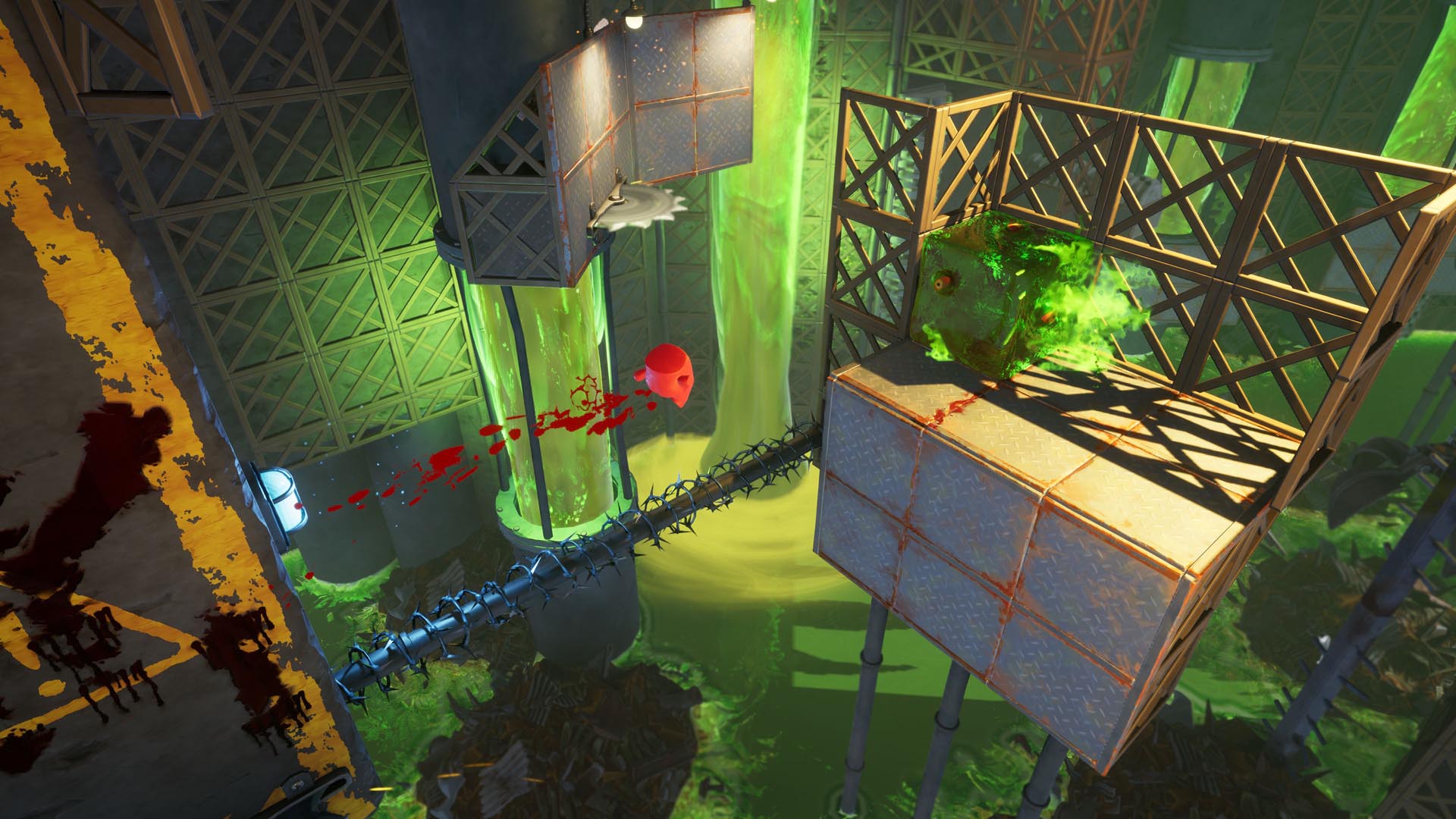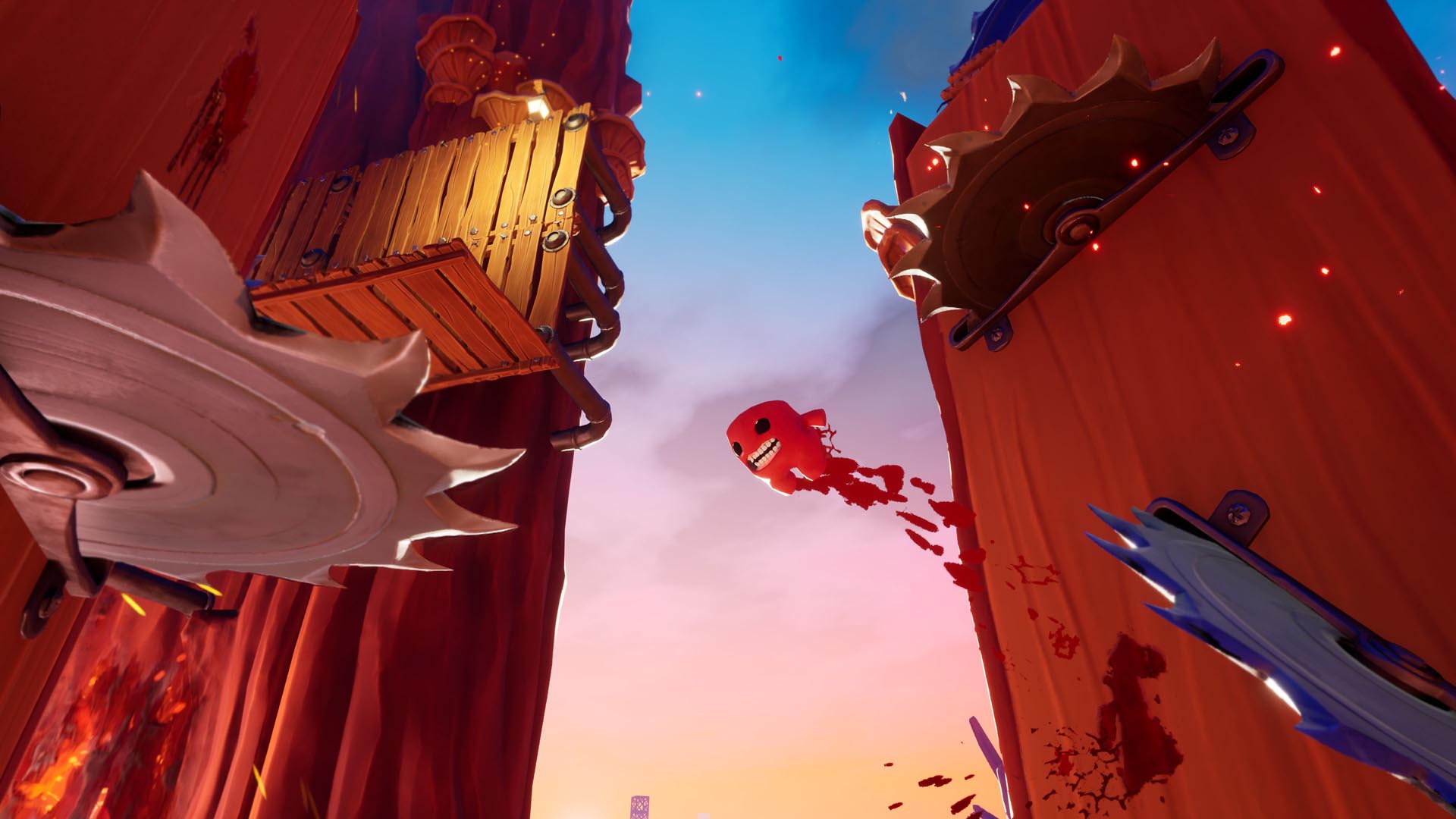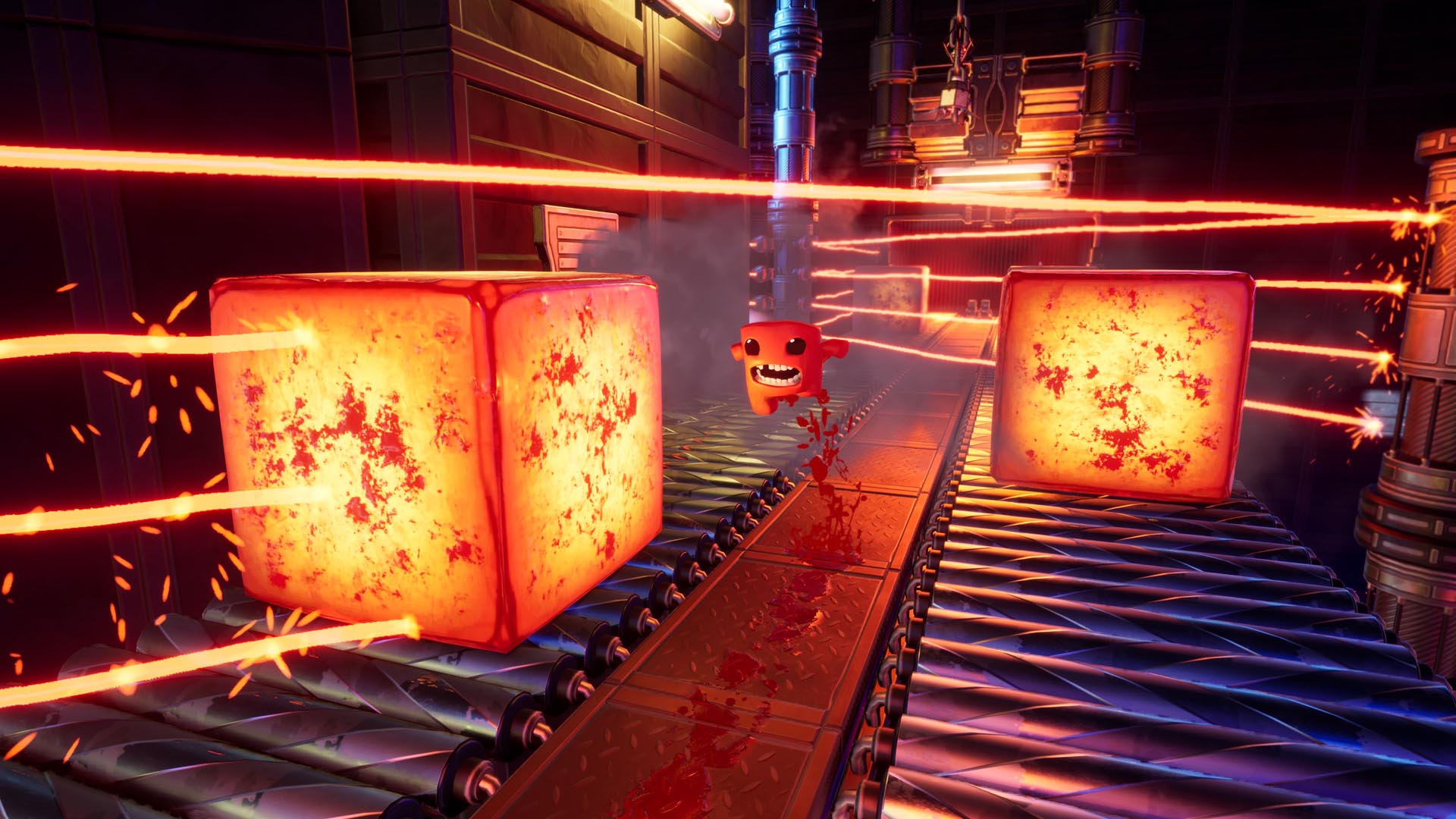“Meat” the Future in Super Meat Boy 3D: How Sluggerfly Balanced Nostalgia and Innovation
Super Meat Boy has been a herald, a figurehead, and an example of what indie dev teams can achieve. It showed that small, weird games could make a big impact. The game was punk rock – fast, rough, with odd humor and strange characters.
What started as a Flash game in 2008 turned into a story of indie success in 2010 that paved the way for – and inspired – many game devs who now tell success stories of their own. That’s why it feels only right that Sluggerfly, our small indie team of seven, took on this next installment in the franchise, Super Meat Boy 3D.
Having developed the well-received 3D platformer Hell Pie, as well as the Ben and Ed series – games praised for their tight controls, quirky, exaggerated humor and “indie-spirit” – Super Meat Boy 3D is being developed by our team of very excited, very honored developers in close collaboration with Team Meat’s Tommy Refenes.
“A few years ago I played Hell Pie. I really liked it, and I was hoping Sluggerfly would be interested in doing a 3D version of Super Meat Boy,” Refenes said. “To my surprise, they were fans of Meat Boy and were excited about the possibility of working on Super Meat Boy 3D. Their excitement really shines through with the work they’ve done. They have pulled off a conversion from 2D to 3D that’s on par with the feelings I had the first time I played Metroid Prime. They have nailed it.”

Being chosen to work on one of indie gaming’s more legendary IPs wasn’t just incredibly humbling and exciting for us – but also quite intimidating. How can we do justice to the brand while offering innovation?
Our game started as a prototype that explored whether Super Meat Boy could work as a 3D platformer in the first place. With such a big change to a franchise that had been exclusively 2D so far, it was vital for us not to lose the core aspects that make a Meat Boy game a Meat Boy game. The main areas where this translation into another dimension was most noticeable were the camera movement, depth perception, and controls. Can you really capture that speed and movement in 3D without making sacrifices on either front?
Adding a third dimension naturally increases the complexity of whatever you’re working on. There’s a camera to manage, which ideally shouldn’t get in the way of the controls. In 3D games, players often control the camera themselves – but with Meat Boy’s fast-paced movement, the team quickly realized that wouldn’t work. A dynamic or player-controlled camera just couldn’t keep up with the pace Meat Boy requires. It created more problems than it solved, so after testing different options, we decided to keep the camera static, allowing for a greater focus on speed and movement.

Speaking of added complexity due to the third dimension – there is an additional perceptual challenge for players – everything tends to feel less crisp and more floaty. The prototype gave the team time to tackle the implementation of horizontal movement – especially with the large amount of wall-running shown in the trailer – and, on a more general level, how to translate movement in a way that makes players feel completely in control of where they are and how they move.
Super Meat Boy 3D is a game that needs tight and responsive controls if it wants to capture and represent the heart of the franchise. So, going hand in hand with a player’s perception of their character’s movement are, of course, the controls themselves. Every player action now happens not only vertically but also horizontally. With the added spatial depth, the feeling of precision and awareness can get lost. To help prevent this, we’ve implemented ways to balance the freedom of players with structures that aid them in feeling in control. In 3D, precision becomes much harder to maintain, so putting in small rules—like fixed angles or limited movement directions—helps a lot.

One of these is eight-directional movement on the stick, which Tommy suggested at one point during production. It adds helpful structure—movements are a bit more predictable and consistent, which is useful when players are flinging themselves through levels at high speed. And on the topic of levels: something the team found really important was using 45-degree angles throughout level design instead of the initial, more organic layout. It helps players anticipate and plan their moves, especially at high speed. Another way to ensure players know it’s their own fault when they mess up—and not the game’s—is the small but handy addition of a “ground circle” to mark your current position on the ground. This really helps with spatial awareness, especially when Meat Boy is up high in the air or far from geometry.

We at Sluggerfly, Headup, and Team Meat really hope you enjoy this new version of what you’ve come to know and love from previous Meat Boy games. With Super Meat Boy 3D, we’ve poured our hearts into honoring the legacy of the franchise while pushing it into bold new territory—we can’t wait for you to play it and see where Meat Boy lands next.
Wishlist Super Meat Boy 3D now on the Xbox Store and get ready to die again, and again, and again when Super Meat Boy 3D launches for Xbox Series X|S and Xbox on PC early 2026. You can also play it day one via Game Pass.
.post-template-default .xwsrc-block-content-block .wp-block-column.flex-basis-50.push–25.column–content {
flex: 100%;
margin-left: 0;
}
The post “Meat” the Future in Super Meat Boy 3D: How Sluggerfly Balanced Nostalgia and Innovation appeared first on Xbox Wire.


